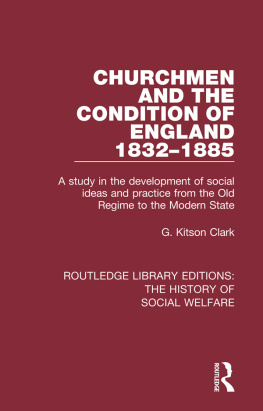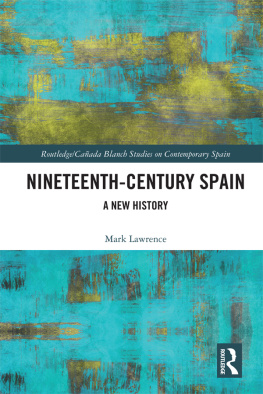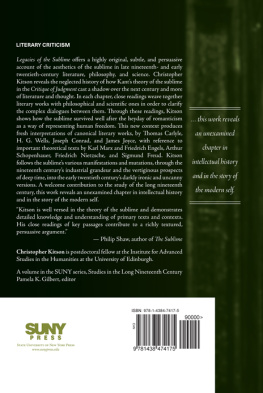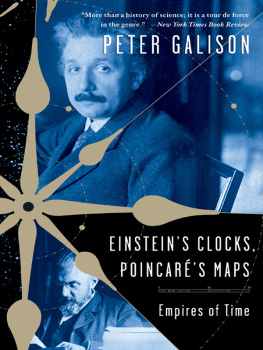NINETEENTH-CENTURY TRAVELS, EXPLORATIONS AND EMPIRES
Volume 4
General Editor Peter J. Kitson
Volume Editors William Baker Indira Ghose Peter J. Kitson Susan Schoenbauer Thurin
NINETEENTH-CENTURY TRAVELS, EXPLORATIONS AND EMPIRES
WRITINGS FROM THE ERA OF IMPERIAL CONSOLIDATION 1835-1910
Volume 4
THE FAR EAST
Edited by Susan Schoenbauer Thurin

First published 2003 by Pickering & Chatto (Publishers) Limited
Published 2016 by Routledge2 Park Square, Milton Park, Abingdon, Oxon OX14 4RN711 Third Avenue, New York, NY 10017, USA
Routledge is an imprint of the Taylor & Francis Group, an informa business
Copyright Taylor & Francis 2003
All rights reserved, including those of translation into foreign languages. No part of this book may be reprinted or reproduced or utilised in any form or by any electronic, mechanical, or other means, now known or hereafter invented, including photocopying and recording, or in any information storage or retrieval system, without permission in writing from the publishers.
Notice: Product or corporate names may be trademarks or registered trademarks, and are used only for identification and explanation without intent to infringe.
BRITISH LIBRARY CATALOGUING IN PUBLICATION DATA
Nineteenth-century travels, explorations and empires: writings from the era of imperial consolidation, 1835-1910 Part I general editor, Peter J. Kitson 1. Travelers' writings, European 2. Voyages and travels 3. Europe Colonies Description and travel 4. Europe Colonies Social life and customs 19th century I. Kitson, Peter II. Kitson, Peter. North and South Poles III. Baker, William. North America. IV. Ghose, Indira. India V. Thurin, Susan Schoenbauer. Far East 910.9'17124'09034
LIBRARY OF CONGRESS CATALOGING-IN-PUBLICATION DATA
Nineteenth-century travels, explorations and empires: writings from the era of imperial consolidation, 1835-1910. general editor. Peter J. Kitson. p. cm. Contents: v. 1. North and South poles v. 2. North America v. 3. India v. 4. The Far East.
1. Voyages and travels History 19th century. 2. Travelers History 19th century. 3. Travelers' writings. I. Kitson, Peter J.G465 N525 2003 910.4'09'034-dc21
2002030353
ISBN-13: 978-1-85196-760-5 (set)
New material typeset by P&C
DOI: 10.4324/9781003113461
CONTENTS
CHINA
George Wingrove Cooke,
Capt. William Gill, RE, The River of Golden Sand: The Narrative of a Journey through China and Eastern Tibet to Burmah, introductory essay by Col. Henry Yule, CB, RE (1880)
Constance Gordon Cumming, Wanderings in China (1886)
Archibald Little, Through the Yang-Tse Gorges or Trade and Travel in Western China (1888)
Mrs Archibald Little [A. E. N. Bewicke], Intimate China (1899)
JAPAN
C. Pemberton Hodgson, A Residence at Nagasaki and Hakodate in 1859-1860 with an Account of Japan Generally [and] with a Series of Letters on Japan, by His Wife (1861)
Arthur Adams, Travels of a Naturalist in Japan and Manchuria (1870)
Edmund Gregory Holtham,, Eight Years in Japan, 1873-1881 (1883)
Major Henry Knollys, Sketches of Life in Japan (1887)
Hon. Lewis [Strange] Wingfield, Wanderings of a Globe-Trotter in the Far East (1889)
- The River of Golden Sand: The Narrative of a Journey through China and Eastern Tibet to Burmah, introductory essay by Col. Henry Yule, CB, RE (1880)
- Wanderings in China (1886)
- Through the Yang-Tse Gorges or Trade and Travel in Western China (1888)
- Intimate China (1899)
- A Residence at Nagasaki and Hakodate in 1859-1860 with an Account of Japan Generally [and] with a Series of Letters on Japan, by His Wife (1861)
- Travels of a Naturalist in Japan and Manchuria (1870)
- Eight Years in Japan, 1873-1881 (1883)
- Sketches of Life in Japan (1887)
- Wanderings of a Globe-Trotter in the Far East (1889)
Guide
ACKNOWLEDGEMENTS
I first of all want to thank Peter kitson for offering me the opportunity to edit this volume of travel writings. It has been a pleasurable labour to visit nineteenth-century China and Japan with those intrepid scholars who left a record of their experiences so that we might relive them these many years later. I am grateful to the interlibrary loan service at the University of Wisconsin-Stout for helping me to secure copies of texts. My husband, Erik, has not only given me encouragement and support but has also provided substantive assistance in identifying and translating Latin and French quotations. Finally, I wish to thank Kristina, Alex, Erik, and Sigrid Thurin for being delightful harbingers of the next generation of travellers.
INTRODUCTION
China and Japan both severely limited foreign access to their countries until forced by treaty to permit it, China in 1842, Japan in 1854; however, both countries also had a long history of foreign contact. The Romans traded with coastal Chinese towns and traders, and Nestorian Christians and others travelled the 'Silk Road' into the north of China. Jesuit missionaries came to both countries in the middle of the sixteenth century. In China the Jesuits enjoyed the patronage of the emperor, although their influence declined after the 1740s. In Japan they were expelled in 1637 when the shoguns decided to close the country to the outside world, adding a policy forbidding any Japanese from leaving the country. Both China and Japan wanted to prevent the barbarians from introducing political or cultural instability, but both countries also maintained an outlet by which they could profit, China in conducting trade through Guangzhou (Canton), Japan in allowing the Dutch a trading station on Deshima Island near Nagasaki. The West, however, grew restive in its inability to develop trade more freely with both countries.
In the introduction, headnotes and text notes, names of places and people are given in the Pinyin method of transliterating Chinese.
The way in which China and Japan were 'opened' necessarily affected their relationship with the West, but that opening also said a good deal about the two countries themselves. Britain repeatedly attempted to negotiate trade agreements and to set up normal diplomatic relations with China, while America, eager to expand its whaling industry and trade across the Pacific, made many informal attempts to trade with Japan. When war and unequal treaties forced China to accept a foreign presence, the Chinese tried as much as possible to prevent and obstruct Western influence on their culture. The Japanese, though more severely cut off from the rest of the world, were poised to embrace the West when it came calling in 1853. Commodore Perry steamed in with a daunting show of force, the old shoguns and samurai balked, but, by 1868, youthful leaders prevailed and made a deliberate decision to embrace western technology and methods. Within thirty years Japan was catapulted to a world power while China still malingered under the power of ageing leaders who eliminated every youthful reformer who advocated change.
For most Europeans who ventured to the East before the Treaty of Nanjing in 1842, 'China' essentially meant Guangzhou and the Portuguese colony of Macao. Even that meaning of China was an exaggeration, for in Guangzhou foreigners were confined to a narrow strip of land on the Pearl River outside the city walls. There, Western companies were allowed to build their offices, warehouses and residences. No foreign women were allowed on Chinese soil, even in these 'factory' areas, so some Western wives lived in Macao. Contemporary paintings show that by 1835 the lucrative China trade had created thirteen compounds composed of large and impressive Western-style buildings and gardens. Western ships docked at the small island of Whampoa to discharge and load their cargo, and Chinese junks carried it to and from the warehouses in Guangzhou. By 1835, Britain's once unbalanced trade with China was approximately equal. In that year, Dr Parker opened a hospital for the Chinese and the first steam launch was introduced to the waters around Guangzhou. For the people of Guangzhou, 1835 was marked by a fire that destroyed 1,000 homes, and in the same year the infamous Karl Gutzlaff- gifted linguist, missionary and scoundrel - took an American missionary, Edwin Stevens, on a trip up the Chinese coast. The trip would lead to Stevens giving a set of Christian tracts to Flong Xiuquan who started the nominal Christian crusade known as the Taiping Rebellion.








